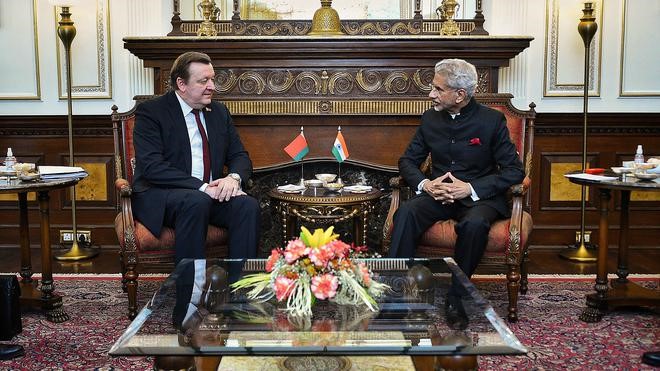





Disclaimer: Copyright infringement is not intended.
Context:
Details:
Benefits of the deal:
|
Eurasian Economic Union members ●The EAEU is an international economic union and free trade zone consisting of five member states: Russia, Belarus, Kazakhstan, Kyrgyzstan, and Armenia. What is the Eurasian Economic Union? ●It is an ambitious project for economic integration in the former Soviet region. ●Its formal objectives are to create a common market much like the European Union (EU). ●It aims to achieve this by coordinating economic policy, eliminating non-tariff trade barriers, harmonizing regulations, and modernizing the economies of its five member states. The EEU institutions: ●These include the Eurasian Economic Commission in Moscow as its regulatory body, and a Court of the Eurasian Economic Union based in Minsk. No Common Currency: ●Unlike the European Union (EU), the EAEU does not share a common currency Issues: ●Member states disagreeing with its judgements can appeal to other bodies, and the Commission has no power to bring a member state before the Court in a case of non-compliance. Disputes are often resolved bilaterally rather than via EEU institutions. |
Conclusion:
Source:
|
PRACTICE QUESTION Q. With reference to the Eurasian Economic Union (EAEU), consider the following statements:
Which of the statements given above is/are correct? (a) 1 and 3 only Answer: (a) Explanation: Statement 1 is correct: ●The EAEU's primary goal is to create a common market that facilitates the free movement of goods, services, capital, and labor among its member states. This objective is akin to the European Union’s approach to economic integration. The EAEU strives to achieve this by coordinating economic policies, eliminating non-tariff barriers, and harmonizing regulations among its member states. Statement 2 is incorrect: ●Unlike the European Union, which has the Euro as a common currency among most of its member states, the EAEU does not have a common currency. Each member state of the EAEU continues to use its own national currency. The establishment of a common currency has not been pursued by the EAEU, primarily due to the economic disparities and differing monetary policies of the member states. Statement 3 is correct: ●The Eurasian Economic Commission (EEC) is the main regulatory body of the EAEU, based in Moscow. It oversees the implementation of policies and regulations agreed upon by the member states, ensuring that the objectives of economic integration are met. The EEC functions similarly to the European Commission in the EU, providing a central authority to manage and regulate economic activities within the EAEU. Statement 4 is incorrect: ●While the EAEU has institutions such as the Eurasian Economic Commission and the Court of the Eurasian Economic Union (based in Minsk) to oversee and adjudicate matters, member states have the ability to appeal against the judgements of these institutions. Disagreements and disputes are often resolved bilaterally between the member states rather than strictly adhering to the EAEU institutional framework. This indicates that the EEC and the Court do not have absolute authority, and their decisions can be contested by the member states. |







© 2025 iasgyan. All right reserved